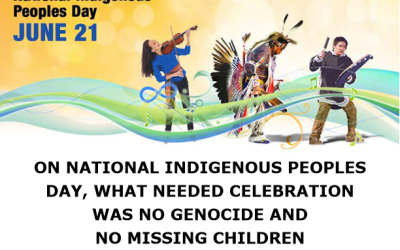Canada needs to end colonialism and grant the country’s 630 First Nations title to their reserve lands fully and unconditionally. Doing so should no longer be controversial and should transcend partisanship. But once that’s done individual First Nations have to go further and give individual First Nations people the right to own land in fee simple, as all other Canadians can.
The need to do so became clear to me when I appeared as a witness before the House of Commons Standing Committee on Indigenous and Northern Affairs last April. The committee was looking at how the housing shortage was impacting Indigenous peoples. No surprise: testimony kept coming back to how First Nations on reserve were locked out of modern economic life by provisions of the Indian Act that prevent land from being bought and sold on the market.
Fee simple is the usual form of land ownership in Canada. It allows the owner to rent or sell his, her or its land to anyone and to use the land as collateral for loans. Why should individual First Nations people be denied fee simple title to their lands when this is something many of the country’s 43 fully self-governing First Nations already possess? (To be self-governing, a First Nation has to come to a self-government agreement with Ottawa. At the moment 50 more First Nations are involved in such negotiations.)
B.C.’s Tsawwassen First Nation, self-governing since 2009, already manages its lands in fee simple. It can allot parcels of land to individual First Nations citizens. So do the Labrador Inuit Nunatsiavut Government and Metis settlement governments in Alberta and Nunavut. All First Nations, whether governed under the Indian Act or fully self-governing, should have the same option to receive title over their lands in fee simple.
It is often argued that “privatizing” reserves will lead to First Nations being dispossessed on their own lands. This is a myth disproven by real-life examples. Self-governing First Nations can go to great lengths to ensure land remains within the community. In exercising their land rights, they can restrict how lands can be transferred from one person to another and whether land can be held by non-Indigenous people.
In 2012 the self-governing Nisga’a Nation in British Columbia implemented a Landholding Transition Act that allows members to own 0.2-hectare residential lots (their home property). Nisga’a lands eligible for fee simple ownership currently comprise only 0.05 percent of total Nisga’a lands. Recent data show that 76 fee-simple titles are registered in the Nisga’a Land Title Office and Nisga’a citizens own all 76 parcels of land. So far no one has defaulted on their mortgage payments. This is a far cry from doomsday mass privatization. It suggests an orderly and cautious roll-out of rights by a government determined to ensure land remains Indigenous.
There are other examples. In 2019, the James Bay Cree government removed its 75-year limit on land leases, thus allowing members to build equity in their homes and no longer rely on band guarantees to back mortgages. It has been cautious in the roll-out of this new housing strategy, however. For example, it helps teach new owners and renters about financial literacy and home maintenance.
During the Harper years the First Nations Tax Commission — a First Nation-led federal institution — proposed a First Nations Property Ownership Initiative that was about transferring title from the Crown to participating First Nations. Then First Nation governments could choose whether or not to grant individual property rights to members or adopt regimes to ensure large tracts of its lands were off limits to private ownership. Each First Nation would have land governance powers to protect its land. Moreover, this option would not affect existing treaty or Aboriginal rights: once title was turned over to a First Nation, it would always remain First Nation land subject to First Nation laws. Unfortunately, the law was never introduced and the Liberals did not take it up again.
Some people argue the Framework Agreement on First Nation Land Management Act (FNLMA) makes full property ownership unnecessary. It does allow First Nations stop land management provisions from applying to their reserve lands, although the land remains a reserve. And it is certainly true that by cutting Ottawa out of the equation, First Nations are better positioned to develop economically than they can under Indian Act control. But the real gains in terms of increased land values and economic opportunity will come from opening up even a small percentage of reserve lands to fee simple ownership.
Adopting the FNLMA framework is a great option for First Nations, but ending colonialism means full property rights to individual First Nations people and trusting communities to make correct decisions.
Joseph Quesnel is a senior research associate with the Frontier Centre for Public Policy.



